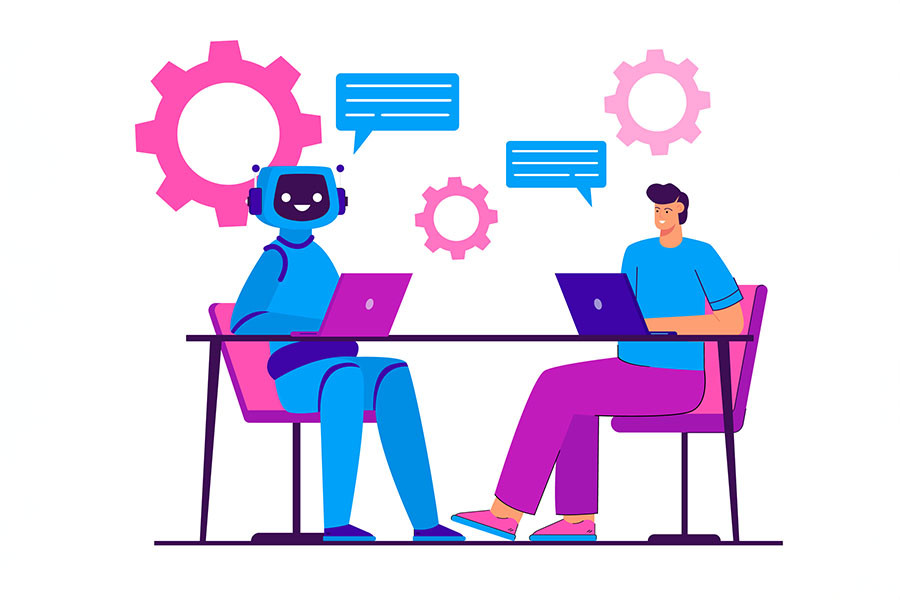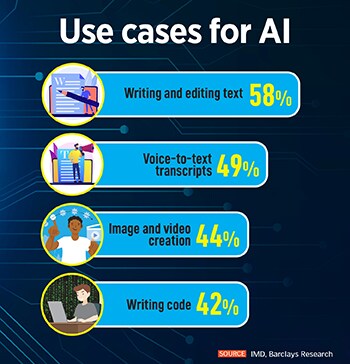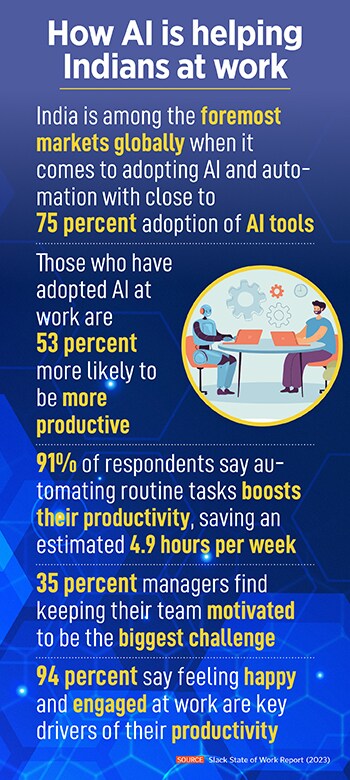
75 percent Indians use AI tools to help drive productivity: Report
According to Slack's State of Work Report, with the increased usage of AI tools, Indian desk workers are saving up to 4.9 hours per week
 Indians who have adopted AI in their work are 53 percent more likely to have significantly higher levels of productivity than those who have not. Image: Shutterstock
Indians who have adopted AI in their work are 53 percent more likely to have significantly higher levels of productivity than those who have not. Image: Shutterstock
India is among the foremost markets globally when it comes to adopting artificial intelligence (AI) and automation, with close to 75 percent adoption of AI tools to help drive productivity, according to Slack’s State of Work report. It adds that in using these tools, Indians have saved about 4.9 hours per week. Indians who have adopted AI in their work are 53 percent more likely to have significantly higher levels of productivity than those who have not. AI is a huge opportunity for India given that digital transformation spending in India is likely to touch $85 billion by 2026, claims Slack.
While there is an increased adoption of AI tools, is there a fear of job losses? Derek Laney, Slack Technology Evangelist, APAC, Salesforce, thinks not. He believes employees are seeing the benefits of using these tools. "In many cases, employees have started adopting AI tools for themselves, even before the company is ready to use them. This means that Indians are hugely enthusiastic to learn and experiment because they see the benefits," Laney adds.
 The report identifies three main trends that are driving employee productivity:
The report identifies three main trends that are driving employee productivity:
- Adoption of AI and automation are revolutionising organisations
- Office work and design are being redefined in the age of hybrid work
- Employee engagement and talent development also directly impact productivity
 On the other hand, productivity and employee wellbeing are not mutually exclusive. Job satisfaction, engagement, and mental wellness are also top factors that contribute to productivity, so it is crucial for leaders to consider these areas as part of how they redefine and drive productivity. The majority (94 percent) of employees in India say feeling happy and engaged at work are key drivers of productivity, states the report.
On the other hand, productivity and employee wellbeing are not mutually exclusive. Job satisfaction, engagement, and mental wellness are also top factors that contribute to productivity, so it is crucial for leaders to consider these areas as part of how they redefine and drive productivity. The majority (94 percent) of employees in India say feeling happy and engaged at work are key drivers of productivity, states the report.








